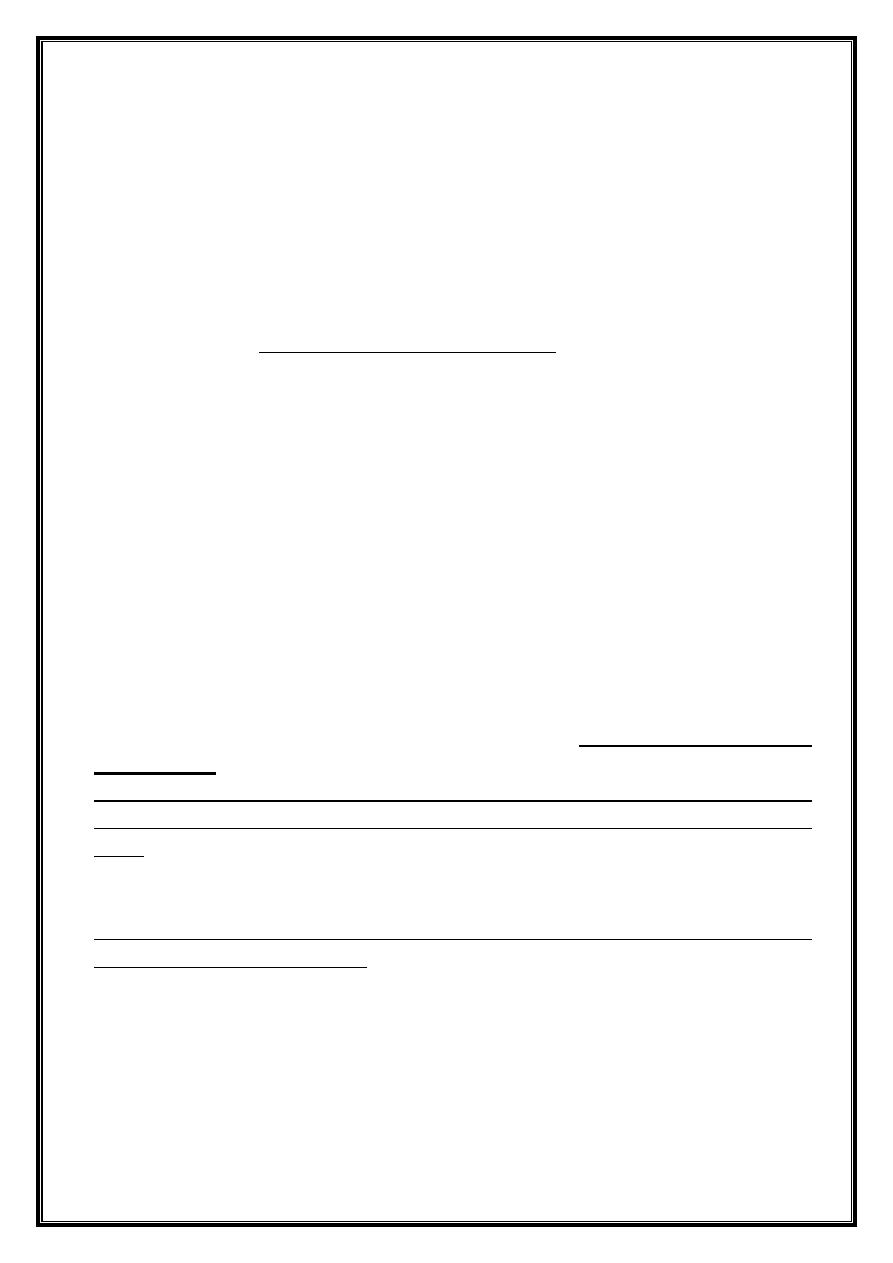
1
PSORIASIS
*Definition:
it is a common chronic recurrent inflammatory disease of the skin
characterized by circumscribed, erythematous, dry scaly plagues of various sizes. The
lesions are usually covered by silvery white scales.
*Epidemiology:
psoriasis is world wide disease; incidence is about 1-3% of the
population. It occurs in equal frequency in both sexes. The onset is at mean age of 27,
but the range is wide from neonatal period to the 70s.
*Pathogenesis & pathology:
The principal abnormality in psoriasis is an
alteration of the cell kinetics of keratinocytes. The major change is a shortening of the
cell cycle from 311 to 36 hours; this results in 28 times the normal production of
epidermal cells so it is a hyperproliferative disorder and this hyperproliferation is
driven by complex inflammatory mediators. The initiator of this inflammatory process
is unknown, but many factors have been blamed including: genetics (When one parent
has psoriasis 8% of offspring develop psoriasis, and when both parents have psoriasis
40% of offspring develop psoriasis), infectious agents, psychological factors &
immunological abnormalities. T-cells & cytokines play a pivotal role in the
pathophysiology of psoriasis. There is activation of T-helper 1 lymphocytes & over
expression of type 1 cytokines (IL2, IL6, IL8, IL10, IFN & TNF ). All of them can
act in a cascade manner to produce keratinocytes hyperproliferation, increased
angiogenesis & inflammatory cells recruitment.
Aggravating factors include:
1. Stress: more than 50% of the cases demonstrate positive correlation between stress
and
severity
of
the
disease.
Stress
may
initiate
or
exacerbate
ps.
2. Medications: psoriasis may be induced by B-blockers, lithium, antimalarial,
captopril, Ca- channel blockers& lipid lowering agents. Systemic steroids may cause
rebound or pustular flares.
3. Infections: B- hemolytic streptococci can initiate guttate psoriasis & aggravate
chronic plague psoriasis.
4. Sun light: most of patients get benefit from sunlight, but in 10% disease become
worse with sun exposure (light sensitive psoriasis).

2
5. Physical trauma: in one third of patients, trauma to the skin results in new psoriatic
lesion at the site of trauma (Koebner’s phenomenon); rubbing and scratching
stimulates the psoriatic proliferative process.
6. HIV: The association between severe psoriasis, psoriatic arthropathy and human
immunodeficiency virus infection is well recognized, but the mechanism of worsening
of psoriasis in these circumstances is unclear.
7. Alcohol & smoking: both can worse ps.
*Clinical features:
the lesions have a predilection for the scalp, nails, extensor
surfaces of the limbs, umbilical region & the sacrum. The eruption is usually
symmetrical (symmetry is very helpful in diagnosis), develops slowly (but may be
exanthematous with sudden onset of numerous guttate drop-like lesions). Symptoms
such as itching or burning may be present. Pruritus is highly variable among psoriatic
patients. The early lesions are small red macules which from the beginning are
covered with dry silvery scales. They increase in size by peripheral extension and
coalescence forming polycyclic or annular, well demarcated plagues which are salmon
pink, covered by scales that are adherent centrally & looser at the periphery. When
scales are removed forcibly, bleeding points appear (Auspitz' sign). Psoriasis can
develop at the site of physical trauma (scratching, surgery, burn) this is called
koebner's phenomena. Involved nails show distal onycholysis, pitting, thick
subungual hyperkeratosis, oil spots (yellow areas of the nail bed), crumbling &
destruction of the nail plate, discoloration & nail dystrophy.
Clinical types:
1. Chronic plaque ps. (ps. Vulgaris): the most common type, the classical plaques
distributed on the trunk & extremities.
2. Flexural ps. (inverse ps.): this form selectively involves the folds & flexor
surfaces such as ears, axillae, groin, inframammary & interglutial creases. Areas
appear red well demarcated, macerated and lack scales.
3. Napkin ps. (ps. of the diaper area): seen in infants 2-8 months of age. Clinically
resembles flexural ps. but involve the diaper area.
4. Guttate ps.: lesions typically occur as an abrupt eruption of small lesions 3-5mm in
diameter (size of water drops) following acute infection as streptococcal
pharyngitis. It occurs mostly in children & adolescent.
5. Psoriatic arthritis: five clinical patterns can occur, but the most common is
oligoarthritis with swelling & tenosynovitis of one or few hand joints.

3
6. Generalized pustular ps.: this rare form of ps. also called Von Zumbusch disease
is a serious & sometimes fatal disease. Erythema suddenly appears in the flexural
area & migrates to other body surfaces. Numerous tiny sterile pustules evolve &
coalesce into lakes of pus. The patient is toxic, febrile and has leukocytosis.
7. Erythrodermic ps.: is severe, unstable highly labile disease may appear as the
initial manifestation of ps. but usually occurs in patients with previous chronic
disease. There will be generalized erythema of the skin with or without scales.
8. Variations according to the location:
a. Scalp ps.: the scalp is a favored site for ps., but it may be the only site
affected. Plagues are similar to those of the skin except that the scales more
readily retained. Even in the most severe cases, the hair is not permanently
lost.
b. Palmoplantar ps.: the palms & soles may be the only location involved as
thick ps. plaque or as pustular rash (palmoplantar pustular ps.). The course is
chronic lasting for years & it may be so painful to limit the motility of the
patient & interfere with his job.
c. Pustular ps. of the digit: (acrodermatitis continua) this severe localized form
of ps. may remain localized to one finger for years. The area is eroded &
studded with pustules & the nails float away on lakes of pus resulting in
anonychia. The condition is extremely painful.
*Treatment:
treatment methods will vary according to the: site, severity,
duration, previous therapies & the age of the patient (treatment is individualized
for each pt.). Treatment may be with topical, systemic agent or both of them.
Rotational therapeutic approach especially with systemic agents can be used to
minimize their long term toxicity & allow their efficacy to be maintained for many
years.
A/Topical treatment:
Topical therapy is generally suitable for limited plague ps. (disease limited to less
than 20% of body surface area). Options include:
1. Topical corticosteroids: these are the most frequent prescribed therapy for
ps. they are available in different formulas; ointments, creams, lotions, spray.
Class I steroids (super potent) can be given for 2-week courses on most body
areas specially on thickened keratotic plagues, while steroids with mild-
moderate potency are preferred in the intertriginous (flexural) areas & the

4
face. Therapy can be continued with pulse applications on weekends to
reduce the incidence of local adverse effects. Unfortunately, there is
typically a rapid recurrence of disease when treatment discontinued.
2. tars: crude coal tar & tar extract are available as oils, baths & ointments.
They have antimitotic effect &suppress DNA synthesis resulting in
epidermal thinning. The thick black viscous fluid often has offensive odor,
local irritant effect &staining property which make them unacceptable by the
patients although they are effective specially if combined with other agents.
3. anthralins: it is a synthetic natural product that applied topically as cream or
ointment. They decrease DNA synthesis reducing cell turnover & have anti-
inflammatory effect. Side effects include irritation & staining of the skin.
short contact therapy (3o mint/day) will minimize these effects.
4. calcipotriol: this is a vitamin D analogue available as cream acts by
inhibition of epidermal proliferation, induction of differentiation & has anti-
inflammatory effects. It is very effective in treatment of plague type & scalp
ps. specially if combined with topical steroid. There is a risk of
hypercalcemia, beside irritation & high price of the drug.
5. tazarotene: this is a receptive specific topical retinoid appear to treat ps. by
modulating keratinocytes differentiation & hyperproliferation as well as
suppressing inflammation. Local side effect is irritation.
6. salicylic acid: a keratolytic agent can be used in different formulas & in
different concentrations to remove thick scales & enhance the penetration of
other topical agents.
7. UVB light exposure: in most instances sun light improve ps. for those
patients it has been found that UVB in the narrow band (311nm) can produce
remissions with or without other topical agents & can be used especially
when PUVA is contraindicated or hazardous like in children & pregnant
women. Treatment sessions 2-3 times weekly increasing the time of
exposure each session. Side effects include erythema, burns & exacerbation
of ps.
8. Goeckerman technique: this regime combines daily application of tar
preparation 2-5%, daily tar bath followed by UVB exposure from special
fluorescent bulbs producing artificial UVB light. It is safe, highly effective
& possibly produces long remissions.
9. Ingram technique: consist of daily coal tar bath, followed by UVB exposure
then anthralin paste is applied to ps. plagues.

5
10. Intralesional steroid injection: injection of triamcinilone acetonide
suspension can be used in refractory plagues, and in nail ps. injections given
monthly till achieve the desired effect.
11. PUVA: (photochemotherapy) in this way of treatment, the patient take a
substance called psoralin (either topical or systemic) then exposed to long
wave UV light (UVA). The idea is to photosensitize this material by the
action of UV light and it will act as anti-inflammatory & antiproliferative
agent. It can be applied topically as lotion, or taken as oral tablet (8-
methoxypsoralin) 2 hours before the exposure to light. Treatment sessions 2-
3 times weekly. PUVA is indicated in severe extensive ps, recalcitrant
plagues, palmoplantar ps. it has the advantage that it can controls severe ps.
with a relatively few maintenance treatments & it can be done in outpatient
clinic. Because of the possibility of long term toxicity (skin tumors, photo
toxicity &photo aging, cataract), PUVA is most appropriate for severe ps. in
patients older than 50 years.
12. Laser: dilated blood vessels are prominent in the psoriatic dermal papillae,
which can be selectively destroyed with yellow light lasers.
B/ systemic treatment:
Moderate-severe ps. (with 20% or more body area involved) or those not
responding to topical agents can be treated with systemic therapy. These
include the following:
1. Methotrexate: Mtx. has been used to treat ps. for over 30 years. It is the
gold standard for the treatment of severe ps, erythrodermic ps,
generalized pustular ps. & psoriatic arthritis. It can maintain remissions
for long periods with continued therapy. It is relatively safe & well
tolerated but the need for periodic liver biopsies discourages patients &
physicians from using it. Mtx. is a folic acid antagonist that inhibits the
enzyme dihydrofolate reductase. It will inhibit DNA synthesis & suppress
epidermal
proliferation
also
has
immuno-suppressive
&
anti-
inflammatory effects, so should be avoided in patients with active
infections. The oral triple dose regimen is the most common method used
7.5 mg taken at 12-hour intervals during a 36-hour period once each
week. Close monitoring of renal & hepatic functions as well as serial
hematological investigations should be taken because of the possibility of
side effects (liver fibrosis, bone marrow suppression). The most common

6
side effects are gastrointestinal: nausea, anorexia, oral ulceration &
stomatitis.
2. Oral retinoids: acitretin is an oral retinoid that is one of the safest
systemic ps. therapies. As monotherapy, it is very effective in
erythrodermic & pustular ps. but it is less effective in plague ps. unless
combined with UVB or PUVA therapy. Mechanism of action is by
decrease epidermal proliferation & enhances differentiation of
keratinocytes. It is taken as oral capsules in a dose of 10-25mg/ day or up
to 50mg/day as monotherapy. Side effects include: teratogenecity (it is
absolutely contraindicated in pregnancy & it is not prescribed to women
with childbearing potential who may be pregnant within 3 years, also
mucocutaneous dryness (dry skin, cheilitis, conjunctivitis), lipid
abnormalities ( increase blood level of cholesterol & triglycerides),
hepatotoxicity, all are dose dependent.
3. Cyclosporine: an immunosuppressive agent used to treat severe
recalcitrant plague ps. it is taken orally in a dose of 2.5-5mg/kg/day. It is
very effective but has many serious side effects: hypertention, renal
toxicity, hepatotoxicity, hirsutism, electrolyte disturbances, hematological
abnormalities & skin tumors.
4. dapson: diamino-diphenyl sulfon can be used in pustular ps. of palms &
soles with variable response. It acts as anti-inflammatory, anti-
chemotactic agent which inhibit neutrophils accumulation & function.
5. biological therapy: as ps. is thought to be driven by activated memory
T- cells, many biological agents are being developed & studied for
targeting the immune system. Biological agents are proteins that can be
synthesized using recombinant DNA techniques & they bind specific
immune cells to inhibit immune reaction. These agents given by parental
route (IV, IM ,subcutaneous) weekly or twice weekly according to the
agent. Alefacept which is one of them is a fusion protein that binds CD2
T-cells which are important in the propagation of ps. Patient remains for
weeks to months free from the disease. The problem with these agents is
that they are so expensive.
6. other agents: like tacrolimus, mycophenolate mofetil, hydroxyl urea
sulfasalazine. All can be used if the above agents are failed to treat the
disease, but the experience with them is limited.

7
*Prognosis:
It is difficult to give a true incidence of the remission rate of psoriasis, as a large
proportion of individuals with slight clinical involvement do not attend
dermatological clinics, or even any doctor.
The course of ps. is unpredictable. It is usually begins in scalp or elbows & may
remain localized in the original region for years. It may be limited to certain
areas like nail ps. Two chief features of ps. are its tendency to recur & its
persistence. Psoriasis is at all times and under all forms a very troublesome and
often an intractable disease, but it is rarely dangerous to life. It is impossible to
say, in any particular case, how long the disease will last, whether a relapse will
occur, or for what period of time the patient will remain free from psoriasis.
Guttate attacks carry a better prognosis than those of a slower and more diffuse
onset, and have longer remissions after treatment. At the other extreme,
erythrodermic and pustular forms carry an appreciable mortality and
arthropathic forms a considerable morbidity. An early onset and a family history
of the disease appear to worsen the prognosis.
